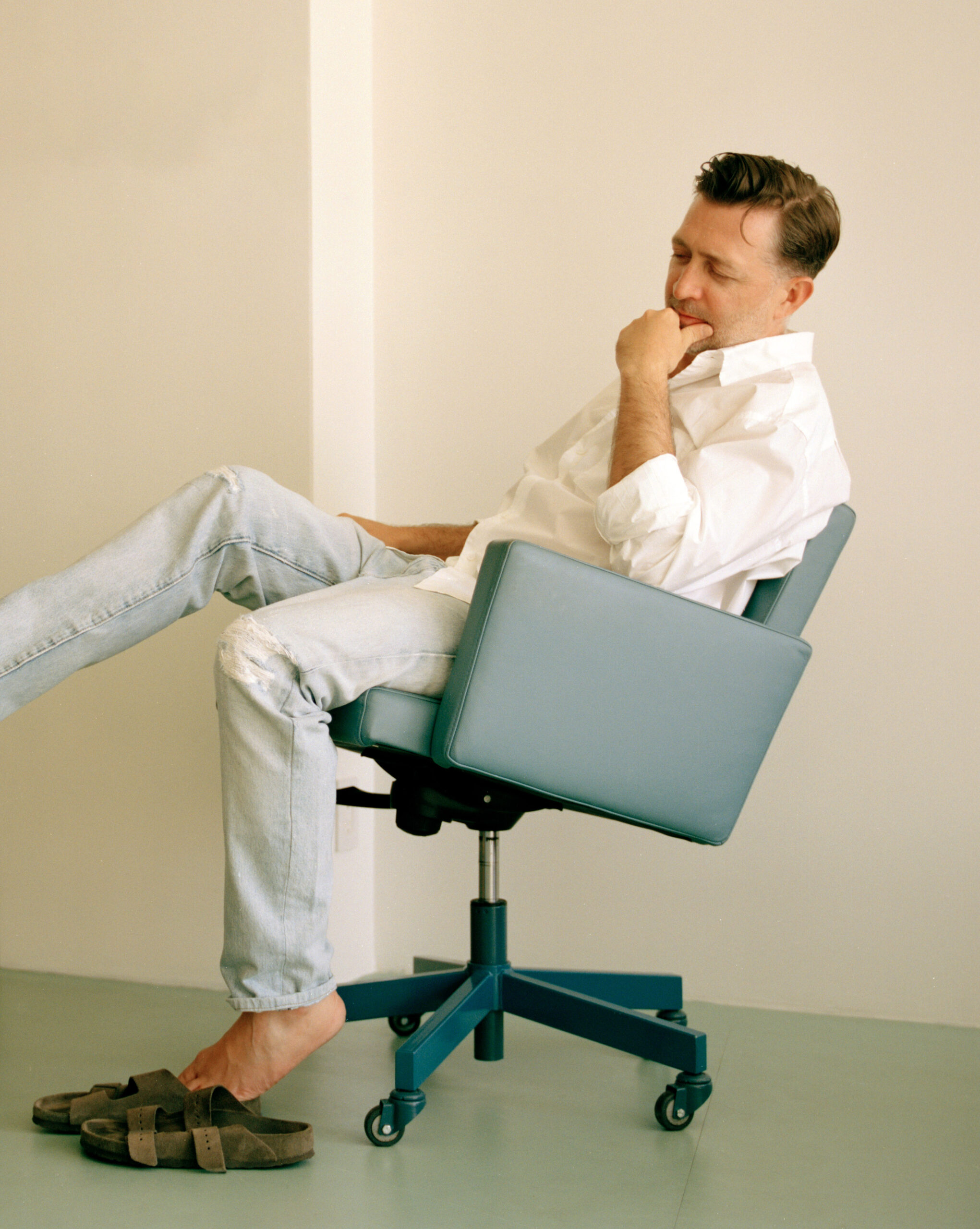The designer talks origin stories, big-names and freeing yourself from aesthetic constraints

You may not know the name, but there’s no doubt you’ll have seen his work. Willo Perron is a creative force in the design industry, having worked for big names all over his locale (LA) and beyond. As an art director and designer, Willo has never confined himself to a medium, telling me that he always just followed the instinct of what interested him. Nowadays, you can see his modish imprint upon iconic brands; his graphic and interior design have (literally!) shaped the stores and branding for Stussy, Yeezy and Helmut Lang. While, as the eponymous name behind the studio WP&A, he’s been the set-curator of the flawless shows of Rihanna and Jay Z. With such an impressive portfolio, we couldn’t help but fawn over the idea of an interview. So here it is – witness the breadth, depth and splendor of the work of Willo Perron.
I’ll start by asking about you – Can you tell me a bit about your steps to becoming a designer?
The journey was just [me] continuously making things, with one thing leading to another. As a kid, I drew houses, sneakers, posters. Eventually that transitioned into making things like club flyers or clothes. I never formally studied design, but I read a lot of books and was obsessed with magazines when I was a teenager/young adult.
What led you to doing such mixed-creative work?
Because I don’t have a formal education and just studied on my own, it permitted me to just do things that I was interested in, as opposed to a singular discipline like fashion or architecture. All the disciplines I work in I’m legitimately impassioned by.
That’s a great way to feel about it! Out of your huge archive, what was the most memorable project to work on?
I don’t have one thing that is the most memorable – I’m still developing my craft and enjoying learning different scales and areas. What excites me is working with different people and learning new things. By gaining people’s trust, the scale [of projects] continues to build up, and this has allowed me to have such a breadth of work.

Unrealized store design render c/o WP&A

Unrealized store design render c/o WP&A
So building relationships of trust is really important?
Certain people trust you implicitly – that’s my relationship with Jay [Z], it’s like “what are we doing? let’s go”. That’s also similar to my projects with Rihanna. There are also projects that are challenging and people are super involved in, but they are also great for their own reasons.
Turning to your interior work – what is the process that leads you from the concept to the final result of a project?
I think you have to really study who and what it’s for: What is the purpose? How are people going to interact with it and live with it? The outer coating always involves the aesthetics and the beauty, but the important thing is understanding how people get to relate to [a space] and enjoy it. Instead of wedging an aesthetic into it, that’s the last thing I do in the process.
When you first enter a space which you have been asked to design, what are the typical thoughts that you reflect on in that space?
It’s about enchanting people, and creating a fantasy. Whether it’s a home, retail space, or office, [I question] how anyone can walk into it with amazement and have a real visceral connection with the place. It’s the same thing we do with [live] shows too.
There’s such an atmosphere in each of your designs, like through the monochromatic vibe of the Yeezy headquarters. What do you think atmosphere achieves in interior design?
I think again it’s about the experience someone has. You walk into your home or a show, or you sit on a piece of furniture we made, it’s about the emotion that it gives you. The Yeezy thing was me and Kanye having a conversation about what we are aesthetically into, then landing on a hybrid of references and making it feel like him.
So there’s always this exchange of ideas between you and the person you’re designing for?
Obviously there is a lot of me in the projects, but also a lot of the interaction with whoever we’re doing the project for.
What core concept do you think links all your interior design projects?
Humanity. And progression in humanity. I don’t like the idea of vintage and retro. Despite the fact I admire a lot of people that came before me, I don’t think it’s necessary to stay in a vetted aesthetic to know you’re doing something right. I like the idea that it’s our generation to do our ideas and our aesthetic. To push new ideas forward.
Brilliant! – onward progress breeds ingenuity, after all. Thanks for talking to us Willo.
Words by Rose Holmshaw